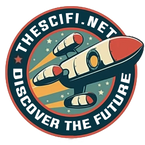
In this blog, you'll learn what Blockchain is and above all. Hope you enjoy!
With many innovations, people initially underestimated how much they would later change the world. In 1990, Telecom believed: "The Internet is a gimmick for computer freaks, we see no future in it." Ex-Microsoft boss Steve Ballmer made a similar statement in 2007 about the iPhone. As is well known, both were wrong.
If one believes lectures and interviews by representatives of the digital economy, another digital turning point could be imminent: "Blockchain technology will turn the financial sector upside down like the electric drive will turn the car industry upside down," believes Philipp Sandner, head of the Blockchain Center at the School of Finance Management.
The blockchain fever has broken out everywhere. It is discussed at industry conferences, corporate boards attend blockchain seminars, and medium-sized companies are working on pilot projects. And it affects the entire economy. From insurance to tourism groups to the shipping of bananas: If you believe the apologists for the new technology, the blockchain could turn our world upside down, just like the Internet recently.
The blockchain is a database that consists of a “chain” of data blocks.
This chain is constantly being expanded to include new blocks in which transactions are stored. The principle can be compared to an accountant who writes all transfers in a network on a piece of paper every day and staples it in a large folder in the evening. The sheet of paper would be the data block, the folder the blockchain.
It does not matter which information is stored in the data blocks - bitcoins, title deeds, freight books. A good accountant ensures that a register is error-free and only records transactions that have actually been made. With the blockchain, a reconciliation mechanism takes on the role of the accountant. With its help, all participants decide which data blocks are sorted out as invalid and which are accepted as valid. How exactly agreement is reached among the participants differs depending on the blockchain application. With Bitcoin, for example, those who have the greatest computing power and thus keep the database running make the decisions.
If the participants have checked and accepted a new data block, it is added to the chain. So it gets longer and longer over time.

BLOCKCHAIN INTERACTIVE
If new blocks are attached to the blockchain, all participants receive a copy of the updated blockchain. The highlight: Since the database is growing continuously, it records all transactions since the start of the blockchain network.
The real highlight: Since there are as many copies as users, the information is stored in the blockchain on thousands of computers around the globe. This makes them practically forgery-proof compared to conventional central databases. A version could be easily manipulated. However, since there are thousands of copies of the unadulterated blockchain, discrepancies can be detected by a simple comparison and forgeries can be sorted out. In English one also speaks of DLT, "Distributed Ledger Technology", distributed accounting technology.
The system is flexible. In some blockchain networks, users can participate anonymously, in others they have to identify themselves personally. Some blockchains are public so that anyone can join (example Bitcoin). Others are private and address a fixed group of participants (such as a company and its suppliers).
In any case, the data is protected - thanks to decentralized storage around the globe and encrypted storage. Fans see blockchain technology as the logical addition to the Internet. While the web enables the decentralization of information, the blockchain enables the decentralization of values.
According to this logic, virtual money produced by users replaces the state coin press and bank transfer. Digital proof of ownership of contracts, houses and containers make notaries, land registry offices and shipping documents superfluous (the selected application examples are explained below). Blockchain technology accelerates world trade, as senders, recipients, logisticians and customs authorities have identical data for the first time. And one day, blockchain votes will bring democracy to even the most remote corners of the planet. The future shines brightly in the eyes of visionaries. The implementation is often just beginning.
The IT giants IBM and Microsoft, for example, are testing the technology. The major US investment banks are relying on partnerships and are hoping for estimated savings of around one billion dollars each per year. And the supermarket giant Walmart is already monitoring its supply chains via blockchain, for example in order to lose fewer pallets due to human errors.
If you want to read blogs about sci fi visit our website TheSciFi.Net.
